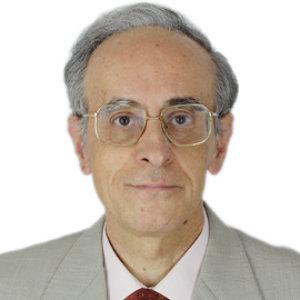Title : Enzyme sulphide coupling for light induced water splitting and CO2 reduction
Abstract:
Many sulphide semiconductors are photocatalytically active in significant ranges of the visible spectrum; our group has shown this, specifically, for In2S3 and SnS2 (R. Lucena et al., Catal. Commun. 2012, 20, 1; ibid. Appl. Catal. A: General, 2012, 415-416, 111). Furthermore, by including V in these sulphides we have shown how their photocatalytic activities can be further extended to even the NIR range (P. Wahnón et al., Phys. Chem. Chem. Phys. 2011, 13, 20401; R. Lucena et al., J. Mater. Chem. A 2014, 2, 8236). Here we will show how coupling these sulphides with enzymes of hydrogenase or laccase types allow photoevolving H2 or O2.
First, we could show that combining In2S3 with a hydrogenase it was possible to generate photocatalytically H2 in presence of a sacrificial agent (C. Tapia et al., ACS Catalysis 2016, 6, 5691). Then, we showed that combining In2S3 with a laccase it was possible to generate O2 photoelectrochemically (C. Tapia et al., ACS Catalysis 2017, 17, 4881), this being the first time that such enzyme-sulphide combination allowed photoevolution of O2. A similar photoelectochemical generation of O2 could be shown by combining SnS2 with a laccase enzyme (C. Jarne et al., ChemElectroChem 2019, 9, 2755).
Some of us carried out recently work which coupled an electrode with a formate dehydrogenase enzyme, including W as active species, so that it was possible to reduce electrocatalytically CO2 to formate (J. Álvarez-Malmagro et al., ACS Appl. Mater. Interfaces 2021, 13, 11891). Ongoing work will be shown here in which combining this latter enzyme with In2S3 nanoparticles allows to perform the same task photocatalytically


